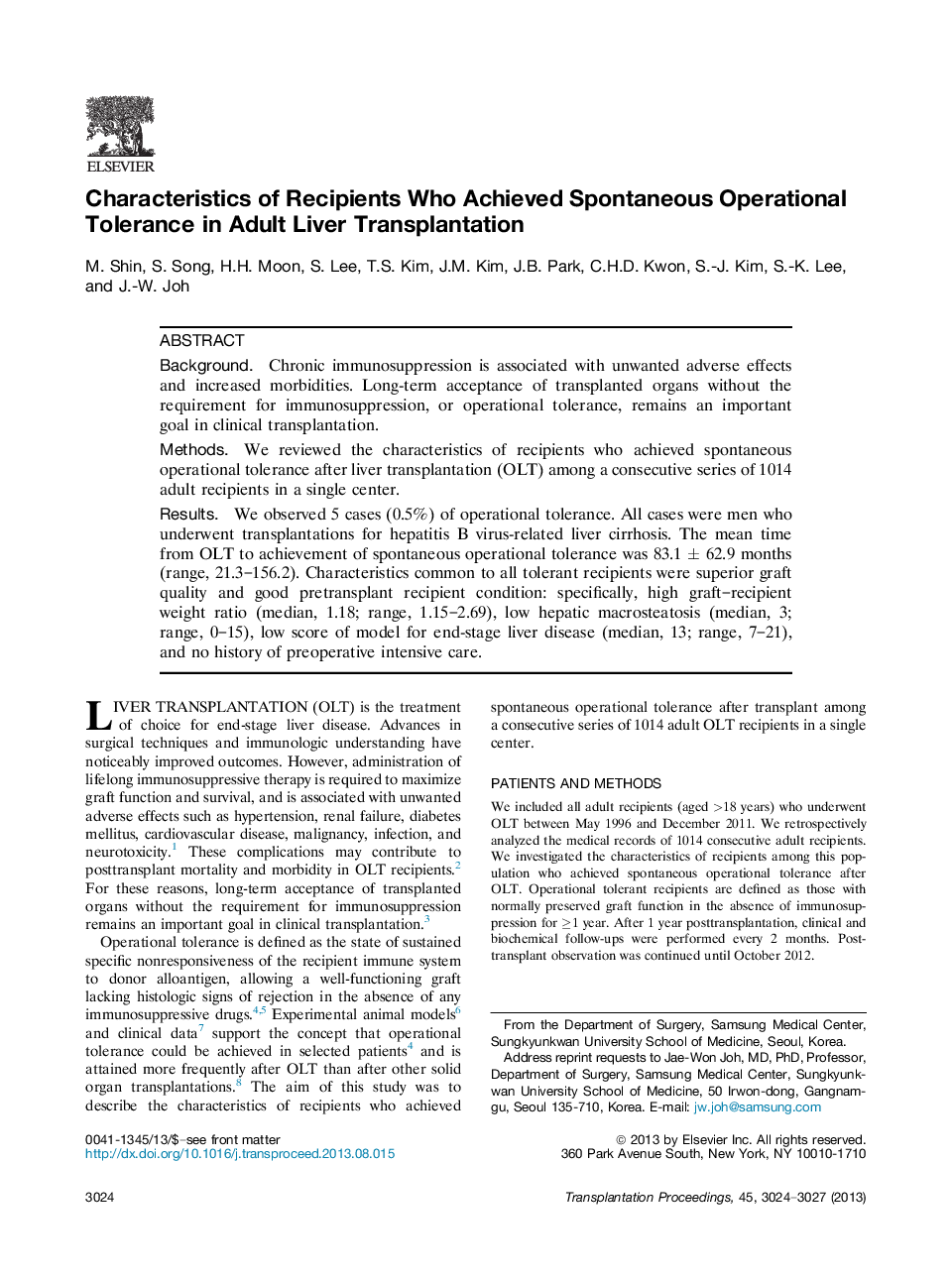| Article ID | Journal | Published Year | Pages | File Type |
|---|---|---|---|---|
| 6249951 | Transplantation Proceedings | 2013 | 4 Pages |
BackgroundChronic immunosuppression is associated with unwanted adverse effects and increased morbidities. Long-term acceptance of transplanted organs without the requirement for immunosuppression, or operational tolerance, remains an important goal in clinical transplantation.MethodsWe reviewed the characteristics of recipients who achieved spontaneous operational tolerance after liver transplantation (OLT) among a consecutive series of 1014 adult recipients in a single center.ResultsWe observed 5 cases (0.5%) of operational tolerance. All cases were men who underwent transplantations for hepatitis B virus-related liver cirrhosis. The mean time from OLT to achievement of spontaneous operational tolerance was 83.1 ± 62.9 months (range, 21.3-156.2). Characteristics common to all tolerant recipients were superior graft quality and good pretransplant recipient condition: specifically, high graft-recipient weight ratio (median, 1.18; range, 1.15-2.69), low hepatic macrosteatosis (median, 3; range, 0-15), low score of model for end-stage liver disease (median, 13; range, 7-21), and no history of preoperative intensive care.
